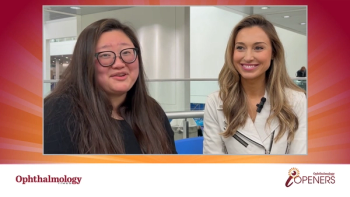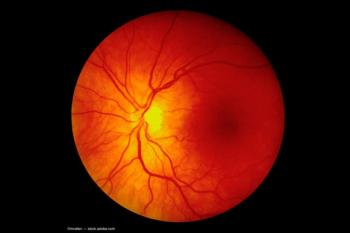
Panel weighs pros and cons of fixed combination therapy for glaucoma
Fixed combination therapy is a good choice for treating patients with glaucoma who have failed monotherapy, agreed an international panel of glaucoma specialists participating in a roundtable discussion on combination therapy.
Chicago-Fixed combination therapy is a good choice for treating patients with glaucoma who have failed monotherapy, agreed an international panel of glaucoma specialists participating in a roundtable discussion on combination therapy.
The panel was moderated by Andy Crichton, MD, and included Francisco Goni, MD, Remo Susanna, MD, Randy Craven, MD, and Peter Galloway, MD. They reviewed indications for fixed combination treatment and the advantages and disadvantages of such products with appropriate references to published literature to support their comments.
The roundtable members pointed out that results of studies with various fixed combinations of glaucoma medications indicate that the IOP-lowering effect of the dual product is comparable to that achieved when the two separate components are used together for combination treatment. However, use of the fixed combination can afford advantages to the patient with respect to improved convenience and reduced exposure to preservatives that can translate into improved compliance and adherence as well as lower treatment cost.
They noted a fixed combination might also be a viable choice as initial therapy in some individuals. That decision, however, needs to be individualized taking into account a variety of disease- and patient-related factors such as IOP, severity of glaucomatous damage, patient age, and level of anxiety regarding the ocular diagnosis and risk of vision loss.
The panel noted that the fixed combination product containing brimonidine tartrate 0.2% and timolol 0.5% (Combigan, Allergan) is a rationale choice since it provides two medications with complimentary mechanisms of action.
In addition, clinical study results indicate it is particularly well-tolerated on instillation and associated with a lower incidence of allergy as compared with brimonidine (Alphagan, Allergan) alone. The potential neuroprotective activity of brimonidine as suggested by results from in vitro and animal models is an interesting feature of the fixed combination of brimonidine plus timolol. However, the evidence on brimonidine neuroprotection is not conclusive, and efficacy, safety, and cost remain the primary criteria for treatment selection, the panel observed.
With regard to economic considerations, a recent Canadian study evaluating costs of fixed combination glaucoma medical therapy made the interesting determination that drop size differs between products and makes a difference in treatment cost. That study compared Combigan, dorzolamide + timolol maleate (Cosopt, Merck) and latanoprost + timolol maleate (Xalcom, AMO) and found the drop size was smallest with Combigan, intermediate for Xalcom, and largest for Cosopt. Corresponding with those differences, the annual cost of therapy in Canadian dollars was calculated to be lowest for Combigan ($316) followed by Xalcom ($399), and then Cosopt ($445).
The roundtable was sponsored by Allergan.
Newsletter
Don’t miss out—get Ophthalmology Times updates on the latest clinical advancements and expert interviews, straight to your inbox.













































